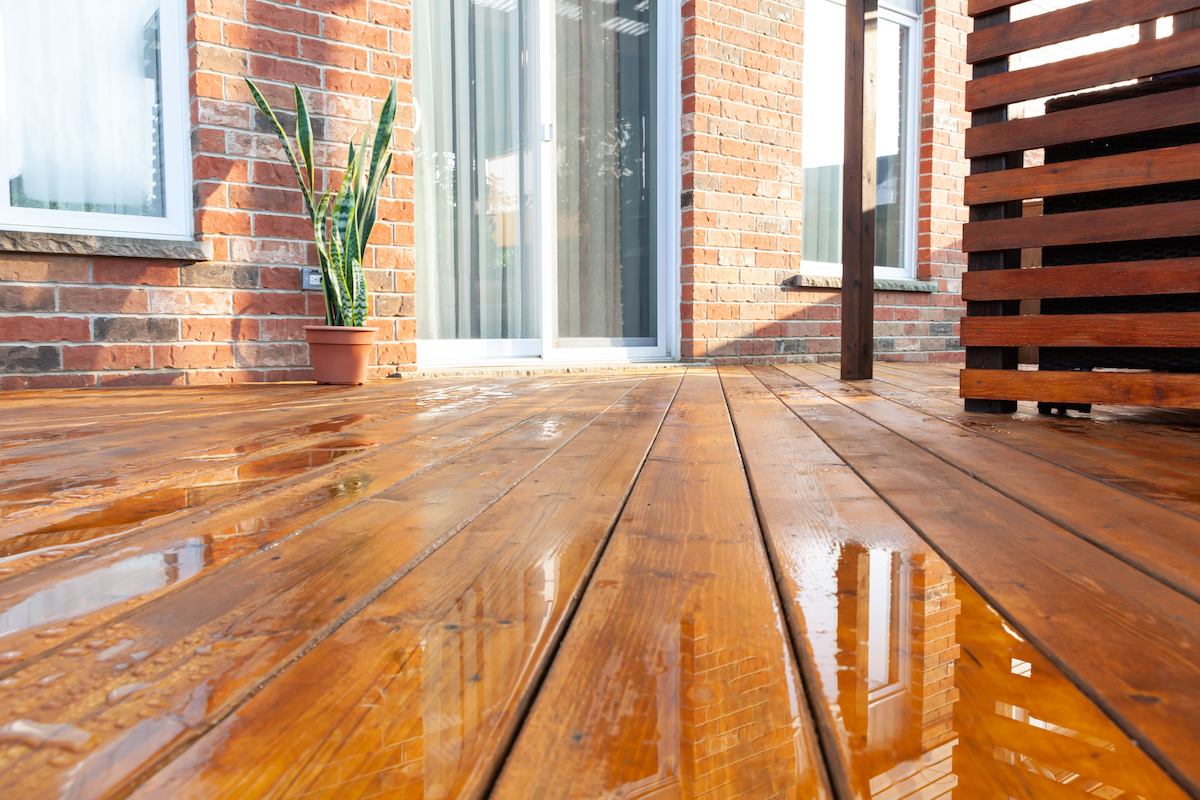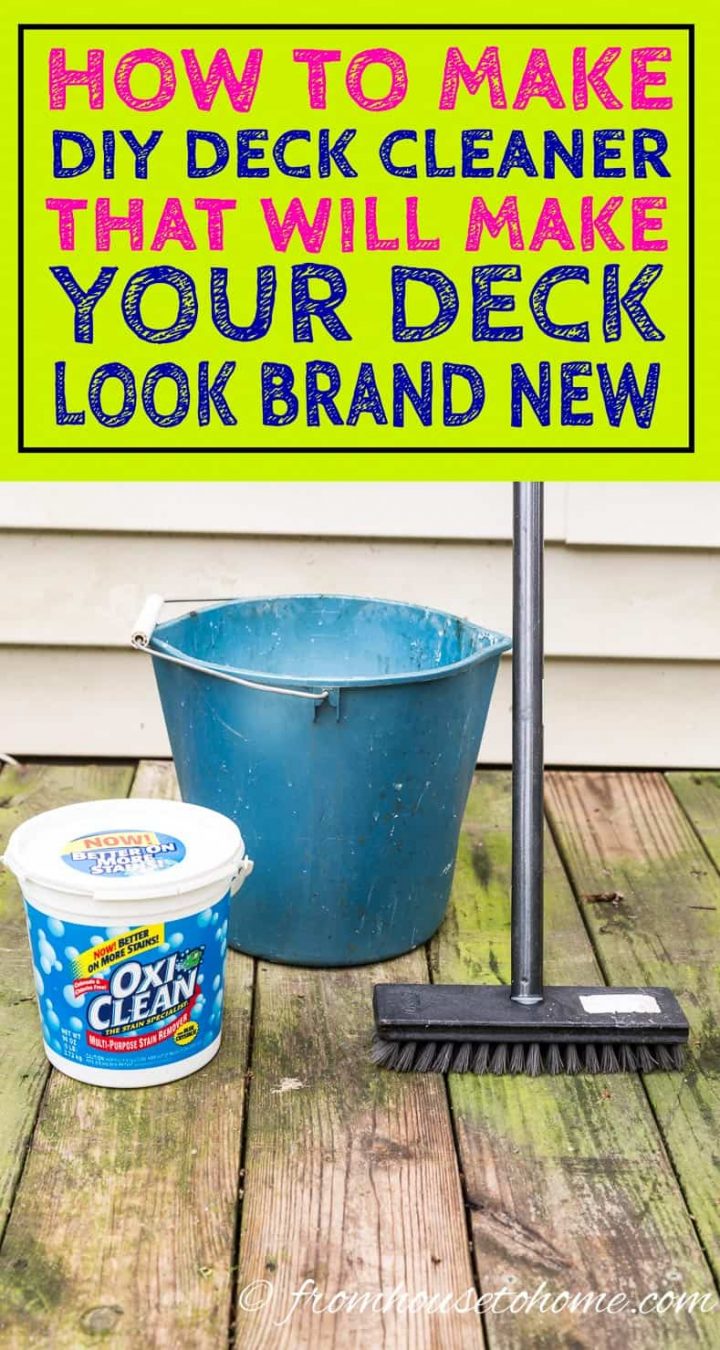Here are a few effective and common deck cleaner recipes you can make at home.
Oxygen Bleach Deck Cleaner
This is a popular and effective option, generally safe for wood and surrounding plants when used as directed. It's particularly good for mold, mildew, and general grime.
Ingredients:

- 1 gallon of warm water
- 1 cup of powdered oxygen bleach (e.g., OxiClean or a generic brand)
- Optional: 1/4 cup of liquid dish soap (ensure it is ammonia-free and bleach-free) for enhanced cleaning
Instructions:
- In a large plastic bucket, dissolve the oxygen bleach completely in warm water. Stir gently. If using, add the dish soap and mix.
- Thoroughly wet the deck surface with plain water from a hose before applying the cleaner. This prevents the cleaner from absorbing too quickly and drying out.
- Apply the cleaning solution generously to the deck surface using a garden sprayer, mop, or a deck brush.
- Allow the solution to sit on the deck for 10-15 minutes. Do not let it dry on the surface; lightly mist with water if it begins to dry.
- Scrub the deck with a stiff-bristled deck brush, moving in the direction of the wood grain. Pay extra attention to heavily soiled areas.
- Rinse the deck thoroughly with a garden hose until all residue is removed.
- Important: Always test the solution on a small, inconspicuous area of your deck first to ensure there is no discoloration or damage to the wood.
Vinegar and Water Deck Cleaner (Mild)
A gentle, natural option for light cleaning, particularly useful for addressing mold and mildew. Best for decks that aren't heavily soiled.
Ingredients:
- 1 gallon of water
- 1 cup of white vinegar
Instructions:
- Mix the white vinegar and water in a bucket.
- Apply the solution to the deck using a garden sprayer or mop.
- Let it sit for about 15-20 minutes.
- Scrub the deck with a brush.
- Rinse thoroughly with clean water.
- Note: Vinegar is acidic. While generally safe, always test on an inconspicuous area first, especially on softer woods or decks with certain types of finishes. Avoid using on stone or concrete areas adjacent to the deck as it can etch these surfaces.
Simple Dish Soap Deck Cleaner
For general light dirt and grime, this is a very mild and readily available option.

Ingredients:
- 1 gallon of warm water
- 2-3 tablespoons of mild liquid dish soap (choose a biodegradable, pH-neutral soap without harsh chemicals, degreasers, or bleach)
Instructions:
- Mix the dish soap with warm water in a bucket until sudsy.
- Apply to the deck surface.
- Scrub with a deck brush.
- Rinse thoroughly with a garden hose.
- This method is best for routine cleaning of light surface dirt.
Important Considerations for All Deck Cleaners:
- Test Area: Always test any homemade cleaner on a small, hidden section of your deck first to check for any adverse effects on the wood or finish.
- Protect Plants: Before application, water down any nearby plants, grass, and surrounding soil. Cover delicate plants with plastic sheeting. Rinse plants and soil again after cleaning is complete to dilute any runoff.
- Work in Sections: On large decks, clean in manageable sections to prevent the solution from drying out before you can scrub and rinse.
- Scrubbing: Use a deck brush with stiff synthetic bristles. Scrubbing in the direction of the wood grain helps to lift dirt effectively and minimize potential damage.
- Rinsing: Thorough rinsing is crucial to remove all cleaning solution residue. Leftover residue can attract more dirt or affect the adhesion of future stains or sealers.
- Avoid Chlorine Bleach: While sometimes recommended, household chlorine bleach (sodium hypochlorite) can be harsh on wood fibers, potentially damaging them and breaking down lignin. It can also be harmful to plants and corrosive to metal deck fasteners. Oxygen bleach is a safer alternative for wood.
- Pressure Washing: If using a pressure washer for applying cleaner or rinsing, use a low-pressure setting (typically 600-800 PSI for softwoods like pine or cedar, and up to 1200 PSI for hardwoods). Use a fan tip (e.g., 25 or 40 degrees) and keep the nozzle moving at a consistent distance from the wood to avoid gouging or damaging the surface.
- Safety Gear: Consider wearing gloves and eye protection when working with cleaning solutions.










